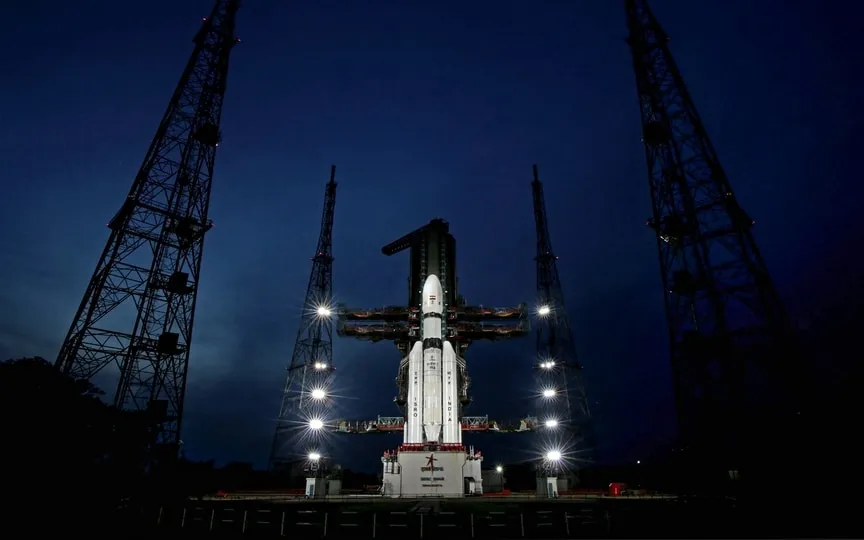Celebrating India’s Tech Progress: A Look Back at 23 Years Since Independence Day 2023
During the 108th Indian Science Congress on January 3, 2023, Prime Minister Narendra Modi emphasized the abundance of data and technology in India’s 21st century, stating that these resources have the potential to elevate the country’s scientific achievements. The Prime Minister also recognized the progress made since the year 2000, which has laid the groundwork for India’s current position. As we commemorate the 77th Independence Day, let us reflect on India’s technological advancements throughout the 21st century.
But before we get to the list, there is one particularly important date to mention, shortly before the year 2000. The date was May 11, 1998, when India successfully tested five nuclear bombs underground in Pokhran, Rajasthan. These tests named “Pokhran-II” established India as a nuclear power and later this date was celebrated as National Technology Day.
Chandrayaan-I
Chandrayaan-I was India’s first mission to the Moon and highlighted an ambition the country had not shown before – to explore space. On 22 October 2008, the operation was launched from Sriharikota in Andhra Pradesh. The purpose of this mission was not to land on the Moon, but rather to hover around it to provide chemical, photogeological and mineralogical mapping to ISRO.
The original mission was planned for 2 years, but after 312 days, ISRO lost contact with the spacecraft due to several technical problems. However, since the mission achieved 95 percent of its planned goals, it was declared a success.
The arrival of 4G
In the 5G world, we don’t really think too much about 4G internet, but on April 10, 2012, when the 4G spectrum was first launched, it was a huge big deal. Before its release, 3G limited the way people used the Internet. While it was still sufficient for emailing, normal web browsing and low-res video streaming, there wasn’t much else to do. But when 4G arrived, it quickly changed the way we used this technology.
Internet-based calling became a reality, a wide variety of smartphone apps began to hit the market, online delivery, taxi booking, reservation and real-time tracking of packages were possible, and in 2020, when the COVID-19 pandemic hit, it also helped students stay connected to classrooms and gave professionals the opportunity to work from home.
Mars Orbiter Mission (also known as Mangalyaan)
With Chandrayaan-I, India demonstrated its capabilities in space exploration, but the Mangalyaan mission made the world recognize the country’s capabilities in space technology. India launched its first-ever interplanetary mission on 5 November 2013 to study the topography, morphology, mineralogy and atmosphere of Mars. The mission made many scientific breakthroughs, but was also praised for its cost-effectiveness, as the entire mission had a budget of just Rs. 450 million (about $73 million at the time).
Startup India program
The government took great strides in technological development, followed by large corporations that came and established their legacies in the 20th century. However, to truly democratize the technology and accelerate its growth, it was important to promote a system that allowed anyone to enter and innovate using the existing infrastructure. And that’s exactly what the government did with the Startup India program, which was launched on January 16, 2016. It aimed to develop an ecosystem that encourages indigenous scientific, technological and innovative development in India.
According to PIB’s data, India will have as many as 52,391 startups in the country in 2021. We have benefited greatly from that. In 2015, India was ranked 81st out of 130 countries in the Global Innovation Index. But in 2022, India rose to 40th position.
UPI
The year 2016 was not only important for the startup ecosystem but also for the massive digital transformation of the financial commerce of Indian citizens. UPI or Unified Payment Interface was introduced on April 11, 2016 under the guidance of RBI and NCPI was made the primary body to both develop it and monitor its regulations.
This greatly reduced the reliance on carrying cash everywhere, as well as securing the small transactions that now took place over the digital infrastructure. According to Statista, India’s UPI transactions were worth more than INR 14.7 trillion in June 2023.
But the journey is far from over. As India approaches the second half of 2023, we enter the world of AI, 5G and even 6G, Internet connectivity and optimism to successfully reach the Moon through the Chandrayaan-3 mission. The nation is just beginning.




